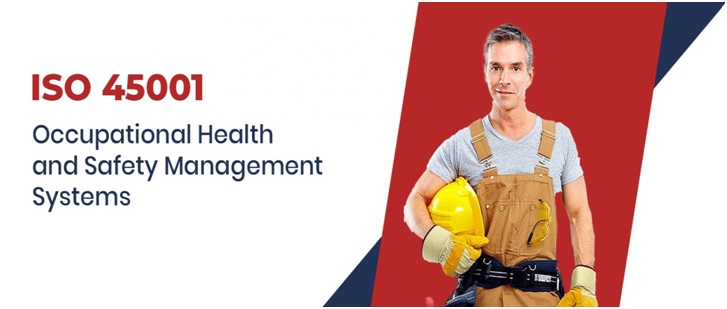ISO 45001 in Pakistan

To guarantee worker safety, Pakistan has implemented ISO 45001 certification. The company offers ISO 45001 certification in Pakistan with skill and dedication. The importance of ISO 45001 in Pakistan may be attributed to its focus on the regulations governing occupational health and safety precautions.
ISO 45001 is essentially a guideline that will assist businesses in enhancing worker security, lowering workplace dangers, and establishing better, safer working conditions globally.
Accidents occur in Pakistan just as frequently as they do elsewhere, making employees as important as ever. For this reason, Pakistan also requires ISO 45001 certification in Multan. The importance of having an ISO 45001 certification in Pakistan is comparable to that of any other nation around the globe.
Working with top institutes to become certified or adapt to the new standard can help you lower organization risk and advance the health and safety of workers (OHS).
An institution’s risk management plan must include an Occupational Health and Safety Management System (OHSMS). By putting in place an OHSMS, a company can:
- Protect the people who work for and are under your charge.
- Follow the law’s requirements.
- Encourage ongoing development.
The accepted worldwide standard for an OHSMS is ISO 45001. The ISO 45001 in Pakistan utilizes the Annex SL top-level structure of all new and updated ISO quality management systems, even though it contains some of the same content and criteria as its successor, OHSAS 18001.
Below are the Main Criteria and Variations.
The major features and organizational context of ISO 45001 in Pakistan
The context of an organization receives considerable attention in ISO 45001. The company must take into account what its stakeholders anticipate from it in terms of managing occupational health and safety. The company must identify the interested parties that are relevant to its OHSMS and ascertain their pertinent requirements.
The goal of ISO 45001 certification in Pakistan is to provide an employer with a high-level awareness of the significant issues that might have a good or bad impact on it and how it handles its obligations to its employees in terms of occupational health and safety.
Challenges of interest are those that have an impact on how well a company can accomplish its intended goals. This includes the goals it has established for its OHSMS.
OHS DIRECTORSHIP
Top executives must now actively participate in the OHSMS and show that it is engaged by taking OHS effectiveness into consideration when making strategic decisions.
By actively managing, assisting, and engaging with employees as well as developing and leading the organizational OHSMS culture, senior management must also influence the effectiveness of the OHSMS.
With reference to occupational health and safety management, this new requirement outlines the standards for senior leadership authority and transparency. This is necessary, in order to prevent overall responsibility from being transferred to health and safety or other management within a company.
Discussion And Involvement
According to the standards, the senior management of the business must promote worker and member engagement and interaction as they are essential components of OHS management.
Discussion entails timely delivery of the knowledge that employees and managers need before the company can make a conclusion and means two-way contact, conversation, and exchanges.
Employee involvement is essential to the OHS management system because it permits employees to participate in decisions about OHS performance and offer input on suggested adjustments.
To enable the implementation of preventative measures and the adoption of remedial action, business must motivate personnel at all levels to report dangerous circumstances.
Professionals must be free to report issues and offer areas that need improvement without worrying about being fired or subjected to disciplinary measures.